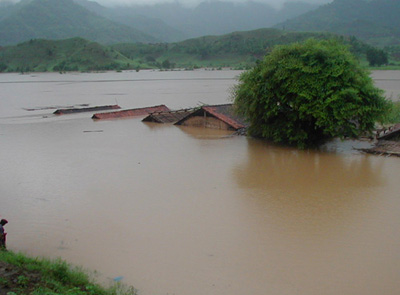“Dams are the temples of modern India.” Jawarhalal Nehru during a speech after Indian independence in 1947.
The Narmada River is located in the western states of Madya Pradesh and the northeastern state of Gujarat, India.The Sardar Sarovar Dam, begun in 1987 to provide hydroelectric power to Gujarat, is the biggest of 30 dams proposed on the Narmada River.

Above. The Narmada River wends its way across the fertile Nimad Plains famous for its agricultural produce and the breathtaking Satpura hills before crossing Gujarat and into the Arabian Sea. Considered one of India’s holiest rivers, Ma Rewa as it is called is also witness to a unique parikrama or circumambulation by pilgrims walking its entire stretch.
To learn more about the Narmada River and the Sardar Sarovar Dam, download this Narmada River Fact Sheet, which includes a timeline.
Images


Document
Narmada Newsletter updates, July 2005 from Narmada Bachao Andolan, a non-governmental organization (NGO) that mobilized tribal people, adivasis, farmers, environmentalists and human rights activists against the Sardar Sarovar Dam.
Jawarhalal Nehru, speaking to the 1958 annual meeting of the Central Board of Irrigation and Power:
“We want to show that we can build big dams and do big things … but the idea of having big undertakings and doing big tasks for the sake of showing that we can do big things is not a good outlook at all.”
“I have been beginning to think that we are suffering from what we may call disease of giganticism.”